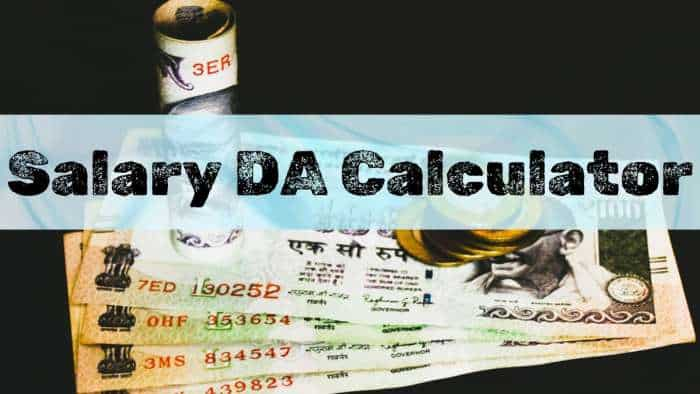These 4 smart money tips will ensure you get rich without taking risk
Consider your monthly expenses at current costs. Assuming an inflation rate of about 6 per cent, inflate the expenses for the number of years left for you to retire. This will help you arrive at the amount of monthly expenses you would need to survive through your retirement years. Then, estimate how much you need to start saving till your retirement age to accumulate a corpus that could provide you with the inflated monthly amount.

Retirement is one financial goal that is largely overlooked. With increasing life expectancy, retirement years could turn stressful if one does not plan in advance. Hence, put aside 10% of your take home salary in a retirement basket, as soon as you start working. Invest in instruments where the compounding takes place more frequently and readjust your risk profile gradually to increase returns. Asset allocation will largely depend on the level of risk you are comfortable with and your age. It also depends on how many dependants you have.
Arriving at your retirement needs
Consider your monthly expenses at current costs. Assuming an inflation rate of about 6 per cent, inflate the expenses for the number of years left for you to retire. This will help you arrive at the amount of monthly expenses you would need to survive through your retirement years. Then, estimate how much you need to start saving till your retirement age to accumulate a corpus that could provide you with the inflated monthly amount.
Change asset allocation according to your age
If you are starting out young, your funds’ portfolio should be heavy on equity funds - around 80 per cent. Aggressive investors (equities oriented) can invest 30 per cent of their funds portfolio in mid-cap and small-cap funds.
In your ‘30s, lighten up your equity funds holding marginally - the aggressive investor from 80% to 70% and the conservative investor (debt/fixed income oriented) from 60% to 40%. In your ‘40s, the best bet for the aggressive investor is a perfectly balanced exposure to both debt and equity. The conservative investor may choose a 10-20% higher debt allocation. In the ‘50s, move your money from volatile equity to safer debt, to ensure the safety of your capital.
Multiple debt instruments for regular income
For regular income use a combination of pure debt-based products. Bank fixed deposits, Senior Citizens Savings Scheme, post office Monthly Income Scheme (MIS) and immediate annuities schemes should form the bulk of your portfolio. While they do give constant income, their returns will not beat inflation. Besides, partially liquidating them during their tenure attracts a penalty. Hence, renew existing fixed-income investments only after considering the tenures.
Watch this Zee Business video
Shift to debt gradually
Post-retirement invest in balanced funds with a maximum exposure of 65 per cent in equities. Invest only in high-rated corporate bonds. Create a contingency fund for emergency expenses.
Source: DNA Money
Get Latest Business News, Stock Market Updates and Videos; Check your tax outgo through Income Tax Calculator and save money through our Personal Finance coverage. Check Business Breaking News Live on Zee Business Twitter and Facebook. Subscribe on YouTube.
RECOMMENDED STORIES

New Tax Regime Slabs: Is your annual salary Rs 12,87,500? Do you need to pay tax on Rs 12,500 or Rs 12,87,500? See calculations to know

Retirement Planning: How one-time investment of Rs 10,00,000 can create Rs 3,00,00,000 retirement corpus

Income Tax Calculations: What will be your tax liability if your salary is Rs 8 lakh, Rs 14 lakh, Rs 20 lakh, and Rs 26 lakh?

Top 7 SBI Mutual Fund MFs by One-time Investment Return: Rs 1 lakh has grown to Rs 2.85 lakh-3.48 lakh in 5 years; see list, compare SIP returns

Dearness Allowance (DA) Calculations: Is your basic monthly salary Rs 25,500, Rs 35,400, or Rs 53,100? Know how much DA will you get at different rates
10:27 AM IST









 Retirement Planning via SIP: How soon your Rs 2,000 monthly investment can reach to Rs 1 crore target?
Retirement Planning via SIP: How soon your Rs 2,000 monthly investment can reach to Rs 1 crore target? Retirement Planning: Age 33, monthly expenses Rs 35,000? Know how much amount you need to retire; how you may achieve it
Retirement Planning: Age 33, monthly expenses Rs 35,000? Know how much amount you need to retire; how you may achieve it Power of Compounding: In how many years your Rs 7,000 monthly SIP investment will grow to Rs 3 cr corpus?
Power of Compounding: In how many years your Rs 7,000 monthly SIP investment will grow to Rs 3 cr corpus? Retirement Planning via SIP: In how many years your Rs 5,555 monthly SIP investment will grow to Rs 3 crore, Rs 4 crore, Rs 5 crore corpus?
Retirement Planning via SIP: In how many years your Rs 5,555 monthly SIP investment will grow to Rs 3 crore, Rs 4 crore, Rs 5 crore corpus? Rs 4,700 Monthly SIP for 35 Years vs Rs 47,000 Monthly SIP for 14 Years: Which can give you higher corpus in long term? See calculations
Rs 4,700 Monthly SIP for 35 Years vs Rs 47,000 Monthly SIP for 14 Years: Which can give you higher corpus in long term? See calculations